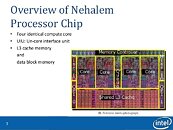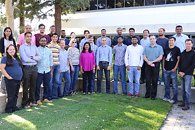Jim Keller Offers to Design AI Chips for Sam Altman for Less Than $1 Trillion
In case you missed it, Sam Altman of OpenAI took the Internet by storm late last week with the unveiling of Sora, the generative AI that can congure up photoreal video clips based on prompts, with deadly accuracy. While Altman and his colleagues in the generative AI industry had a ton of fun generating videos based on prompts from the public on X; it became all too clear that the only thing holding back the democratization of generative AI is the volume of AI accelerator chips. Altman wants to solve this by designing his own AI acceleration hardware from the grounds up, for which he initially pitched an otherworldly $7 trillion in investment—something impossible with the financial markets, but one that's possible only by "printing money," or through sovereign wealth fund investments.
Jim Keller needs no introduction—the celebrity VLSI architect has been designing number crunching devices of all shapes and sizes for some of the biggest tech companies out there for decades, including Intel, Apple, and AMD, just to name a few. When as part of his "are you not entertained?" victory lap, Altman suggested that his vision for the future needs an even larger $8 trillion investment, Keller responded that he could design an AI chip for less than $1 trillion. Does Altman really need several trillions of Dollars to build a grounds-up AI chip at the costs and volumes needed to mainstream AI?
Jim Keller needs no introduction—the celebrity VLSI architect has been designing number crunching devices of all shapes and sizes for some of the biggest tech companies out there for decades, including Intel, Apple, and AMD, just to name a few. When as part of his "are you not entertained?" victory lap, Altman suggested that his vision for the future needs an even larger $8 trillion investment, Keller responded that he could design an AI chip for less than $1 trillion. Does Altman really need several trillions of Dollars to build a grounds-up AI chip at the costs and volumes needed to mainstream AI?






















